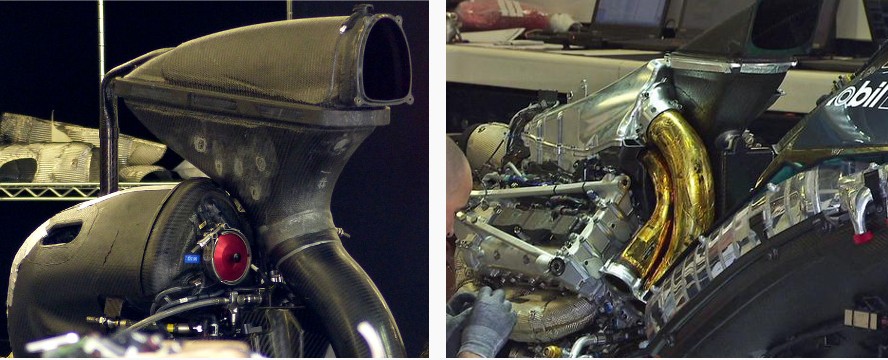How do you come to the conclusion, that the engine is more efficient with higher fuel temperatures?gruntguru wrote:The fuel pressure is probably variable. You won't see 500 bar at part load.PlatinumZealot wrote:Everything else we hear about 500 bar in the 2015 Mercedes has not been confirmed yet so it is a bit of a crapshoot. This could also be a very old screen too. Honda might have upgraded to 500 bar since then. Again we have not confirmation of this... so it anyone's guess.Abarth wrote:Seems a transient or part load condition.
Interestingly enough, the fuel pressure is 300 bar. I thought Honda was adopting pump/injectors with 500 bar capability (the limit of the regulations).
Another interesting thing is the flow into the fuel flow meter is different from the flow through the injectors. I guess it depends on how they integrate the instantaneous values.
The fuel is hot too. 70 deg as someone else pointed out. I think this temperature rise is from pumping the fuel and heat transfer from the cylinder head?
Hot fuel is deliberate (as I have suspected for some time). If they are running at 70* it is because the engine is more efficient at that temperature - not because they cannot control the fuel temperature. Fuel "heaters" were dicussed in another thread (the one about FIA clamping down on secret fuel accumulation and changing system pressure).
Interesting that the power at 10,000 rpm is the same as the Honda RA168e - just coincidence?
Especially for DI engines it also matters a lot where you measure it. If that's inside the fuel cell I'd say that's rather hot. On the other hand you get packaging advantages and if you design your pumps and injectors accordingly it shouldn't be an issue.


